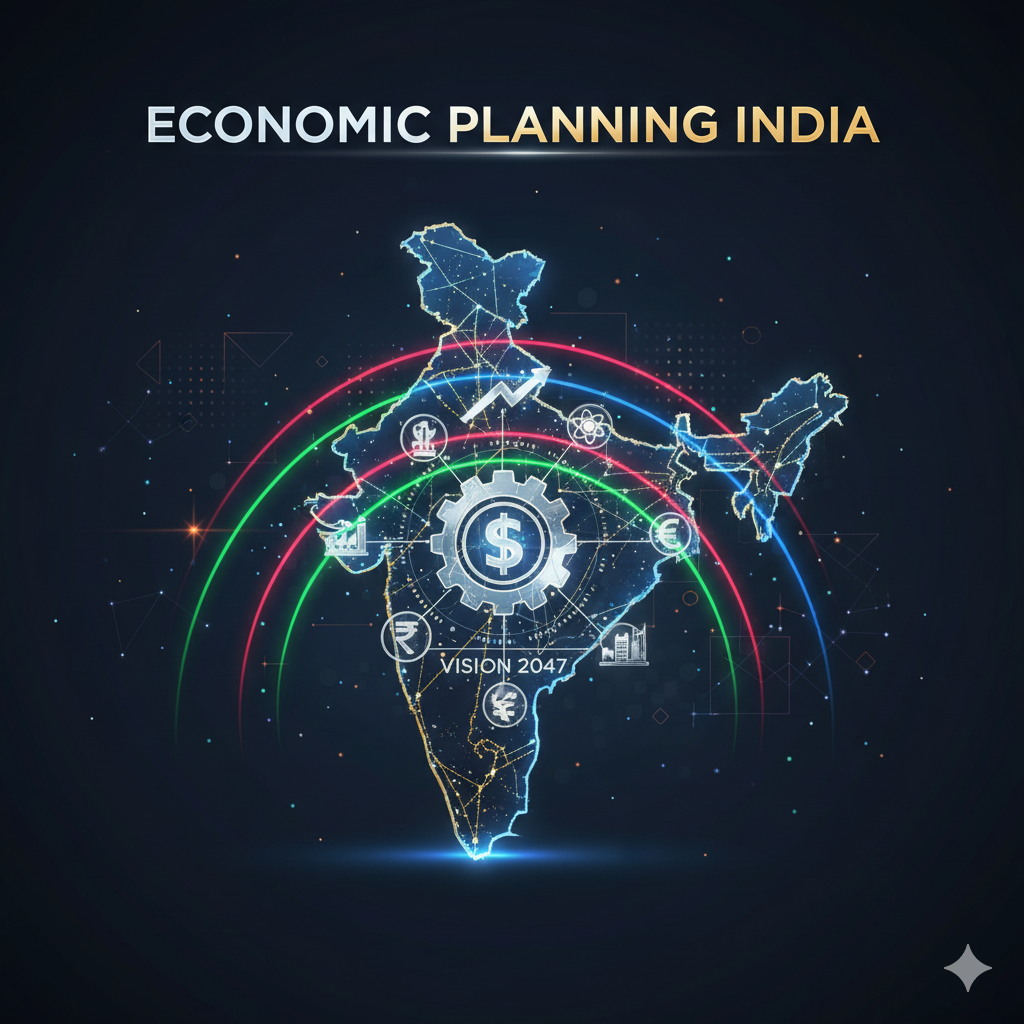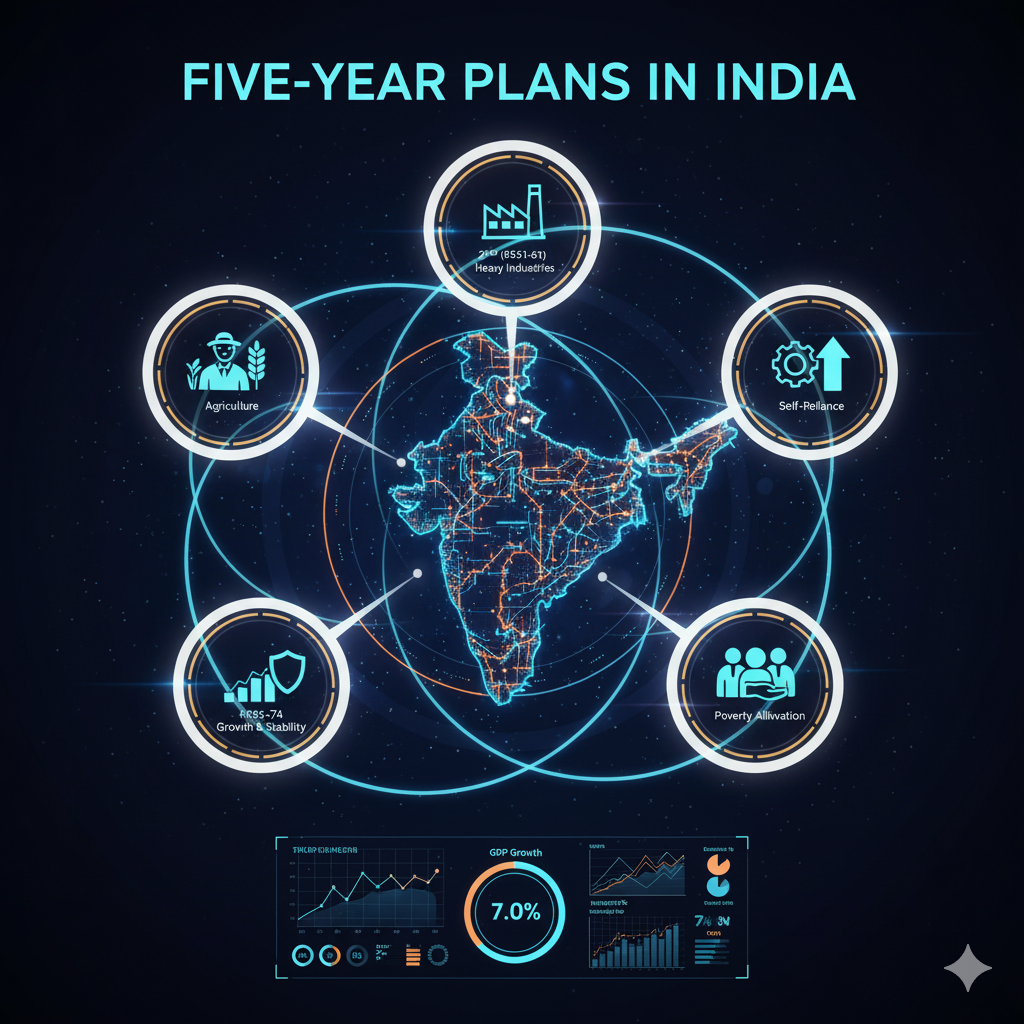Introduction
The COVID-19 pandemic and the subsequent lockdowns imposed by the Indian government had a profound impact on the country’s economy. The sudden halt in economic activities led to a sharp decline in GDP growth, disrupted supply chains, increased unemployment, and posed challenges to businesses across sectors. To counter the recessionary trends induced by the lockdown, the Indian government introduced various budgetary measures, fiscal stimulus packages, and monetary policies aimed at reviving the economy.
This article delves into the impact of the lockdown on different sectors of the Indian economy and evaluates the budgetary strategies implemented to address the crisis.
Impact of Lockdown on the Indian Economy
1. Contraction of GDP
The Indian economy witnessed a significant contraction during the lockdown period.
- The GDP shrank by 23.9% in the first quarter (April-June 2020) due to halted economic activities.
- This was one of the worst contractions among major economies.
- Sectors like manufacturing, construction, and trade were severely affected.
2. Disruption in Industrial and Manufacturing Sectors
- Manufacturing industries faced a decline due to supply chain disruptions and labor shortages.
- The Index of Industrial Production (IIP) recorded a historic low as factories were shut.
- Small and Medium Enterprises (SMEs) struggled to sustain operations due to financial constraints.
3. Increase in Unemployment
- The lockdown led to massive job losses across sectors.
- The unemployment rate rose to 23.5% in April 2020, according to CMIE data.
- Migrant workers were worst hit, with millions leaving urban areas due to a lack of employment opportunities.
4. Impact on Agriculture and Rural Economy
- Agriculture was comparatively less affected, but disruptions in transportation and supply chains caused distress to farmers.
- The harvest season coincided with the lockdown, leading to logistical challenges in moving agricultural produce.
- Demand for rural employment under MGNREGA (Mahatma Gandhi National Rural Employment Guarantee Act) surged due to job losses in cities.
5. Collapse of the Service Sector
- Tourism, hospitality, and aviation industries faced the most severe impact.
- Hotels and restaurants remained closed, leading to significant revenue losses.
- IT and financial services adapted to the work-from-home model, but demand for new projects slowed down.
6. Decline in Consumer Demand
- Reduced income levels led to lower consumer spending.
- Non-essential sectors like automobiles, real estate, and luxury goods saw a sharp decline in sales.
- Retail businesses, especially small kirana stores, faced a supply crunch in the initial phase.
7. Financial Sector and Banking Crisis
- NPAs (Non-Performing Assets) increased as businesses failed to repay loans.
- The banking sector was under pressure due to rising defaults.
- The stock market witnessed high volatility, with major indices crashing initially before a slow recovery.
8. Rise in Government Expenditure
- Increased spending on healthcare infrastructure to combat the pandemic.
- Introduction of welfare schemes and relief packages to support vulnerable populations.
- Revenue generation declined as tax collections dropped due to economic inactivity.
Budgetary Strategies to Combat the Recessionary Trends
1. Atmanirbhar Bharat Abhiyan (Self-Reliant India Initiative)
The government announced a ₹20 lakh crore (10% of GDP) economic stimulus package to revive the economy. Key components included:
- Support for MSMEs: ₹3 lakh crore collateral-free automatic loans.
- Agriculture reforms: ₹1.5 lakh crore allocated for farm infrastructure.
- Liquidity measures: TLTRO (Targeted Long-Term Repo Operations) to provide liquidity to businesses.
2. Fiscal Measures in Union Budget 2021-22
The Union Budget 2021-22 focused on a counter-cyclical fiscal policy to combat recessionary trends. Major highlights included:
- Increase in Capital Expenditure: ₹5.54 lakh crore allocated for infrastructure development.
- Healthcare Spending: ₹2.23 lakh crore earmarked for healthcare (137% increase).
- Production-Linked Incentive (PLI) Scheme: Encouraging manufacturing in sectors like electronics, textiles, and pharmaceuticals.
- Privatization and Disinvestment: Monetization of public sector assets to generate revenue.
3. Strengthening Rural Economy and Agriculture
- The PM Kisan Yojana continued direct income support to farmers.
- The Agriculture Infrastructure Fund boosted cold storage and logistics facilities.
- Reforms in Essential Commodities Act and APMC aimed to improve market accessibility for farmers.
4. Employment Generation and Social Welfare Schemes
- MGNREGA allocation increased to ₹1.1 lakh crore to provide employment in rural areas.
- The Garib Kalyan Yojana supported low-income groups with food security and cash transfers.
- The ECLGS (Emergency Credit Line Guarantee Scheme) helped MSMEs sustain operations.
5. Monetary Policy Measures by RBI
- Reduction in Repo Rate: RBI slashed the repo rate to encourage borrowing.
- Loan Moratorium: Allowed businesses and individuals to defer loan payments.
- Liquidity Support: ₹3 lakh crore injected into the banking system to ensure credit availability.
6. Boosting Digital Economy and Start-ups
- Digital India initiatives encouraged e-commerce, fintech, and online education.
- Start-up India scheme received policy support to drive innovation and employment.
- Investment in 5G infrastructure and digital payment ecosystems accelerated post-lockdown recovery.
7. Focus on Infrastructure and Manufacturing Growth
- National Infrastructure Pipeline (NIP) planned investments worth ₹111 lakh crore over five years.
- Highway and metro projects were fast-tracked to boost construction activity.
- Government incentives for foreign direct investment (FDI) in key sectors like defense and telecom.
Impact of Budgetary Strategies on Economic Recovery
1. Gradual Recovery in GDP Growth
- GDP rebounded with positive growth of 0.4% in Q3 of FY 2020-21 after contraction in previous quarters.
- The economy showed a V-shaped recovery in some sectors, like manufacturing and IT.
2. Employment Revival
- Job recovery was slow but visible in the unorganized sector.
- MGNREGA and urban employment schemes helped stabilize income levels.
3. Growth in Foreign Investments
- India saw record-high FDI inflows in 2020-21, driven by policy reforms.
- The IT sector, digital economy, and infrastructure projects attracted global investments.
4. Boost in Manufacturing and Exports
- The PLI scheme improved India’s global manufacturing competitiveness.
- Export growth resumed, especially in pharmaceuticals, electronics, and textiles.
5. Strengthening Healthcare Sector
- Increased budget allocation for health resulted in better pandemic management.
- Vaccine production and distribution saw major government support.
Challenges in the Post-Lockdown Economic Recovery
1. Rising Fiscal Deficit
- Government borrowing increased significantly, leading to higher debt levels.
2. Slow Recovery of Informal Sector
- Many small businesses shut down permanently, causing structural unemployment.
3. Inflationary Pressures
- Rising fuel and food prices created inflationary concerns.
4. Supply Chain Bottlenecks
- Global supply chain disruptions impacted manufacturing and trade.
5. Continued Pandemic Risks
- The emergence of new COVID-19 variants created uncertainty in economic stability.
Conclusion
The lockdown had a severe impact on the Indian economy, causing a contraction in GDP, job losses, and disruptions across industries. However, the government’s budgetary strategies, including fiscal stimulus, employment support, and monetary policies, played a crucial role in economic recovery. While sectors like IT, manufacturing, and digital economy showed resilience, challenges remain in sustaining long-term growth.
The road to full recovery requires continued investment in infrastructure, skill development, innovation, and sustainable economic policies. With the right strategies, India can emerge stronger and more self-reliant in the post-pandemic era.




